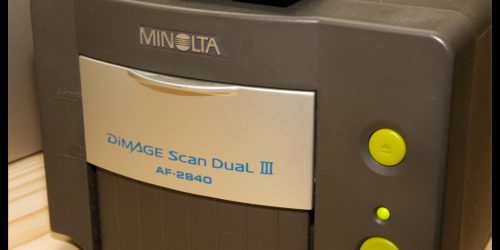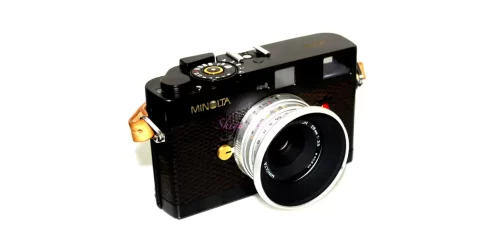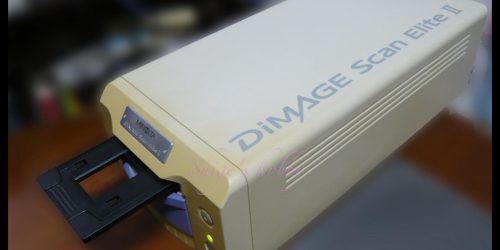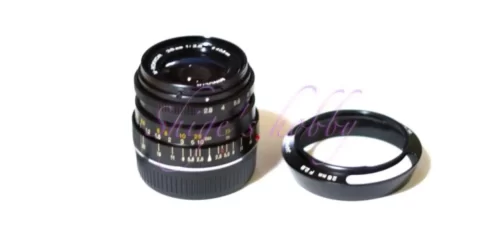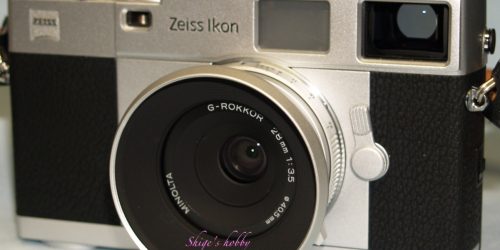MINOLTA DiMAGE Scan Multi PRO
Review and examples of the Minolta film scanner, Dimage Scan Multi Pro.
Table of contents
Gallery
The photo was taken with HEXAR-RF +Voigtlander NOKTON 35mm F1.2 +KODAK Kodachrme64 and scanned with Scan Multi Pro.
Review
In 2023, at the end of the year, I purchased a used DiMAGE SCAN Multi PRO.
The Multi series is unique in that it can scan large format film as well as 35mm film.
Unlike the DiMAGE Scan Elite 5400 series, the film side is on top of the scanner, so you need to be careful not to get dust on the scanner during scanning. However, it is safer to use a blower to blow off the dust before scanning.
I scanned a negative film and a slide film, and I feel that 4800dpi is superior to NIKON’s 4000dpi scanner in terms of the precision and three-dimensionality of the scanned slides.
As of 2023, the price of reversal film has risen considerably, and I am not in an environment where I can easily use it, so I plan to use this scanner to revive my old film collection.
The scanner can capture four 35mm films in a single operation, with a 600 dpi preview taking about 80 seconds and a 4800 dpi capture taking about 180 seconds, or about four minutes to process one film.
The recommended specs for PCs when this scanner was sold were Pentuim III 450MHz, so it would seem that a modern PC would be able to speed up some of the processing, but unfortunately, it is bound by the specs of the scanner itself, and the processing time is the same as it was back then.
I plan to take video soon, but it is noisy due to the huge carriers it moves. If you just want to scan 35mm film, NIKON’s LS-40, 50, 4000, and 5000 series are quieter and faster.
However, NIKON scanners can scan 50 consecutive sheets if the optional SF-210 is used, which is limited to two models, LS-4000 and LS-5000, when processing film mounted in a slide frame. However, without the SF-210, or with lower-end models such as the LS-40 and LS-50, films that are mounted in a slide frame must be scanned one at a time, which is time consuming.
Slip film is easy to use for NIKON, which does not need to be set in a carrier.
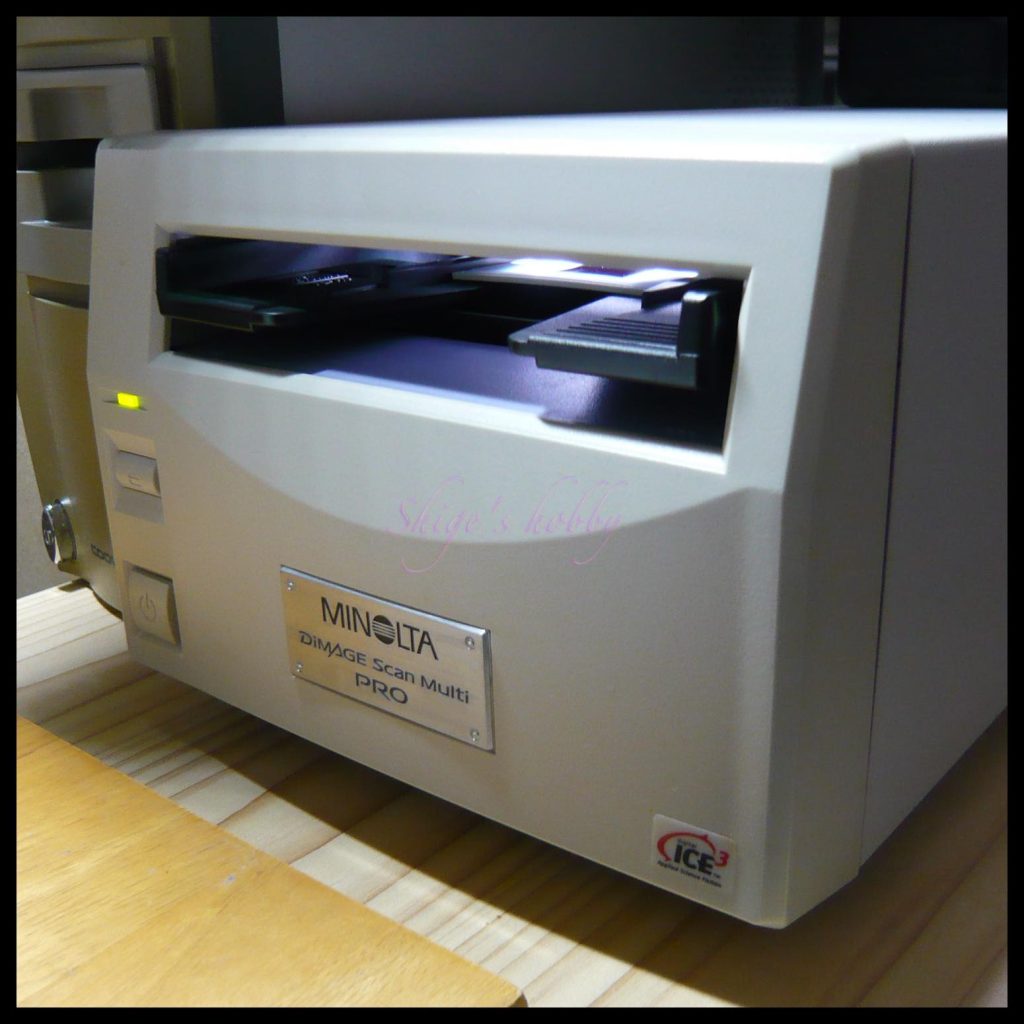
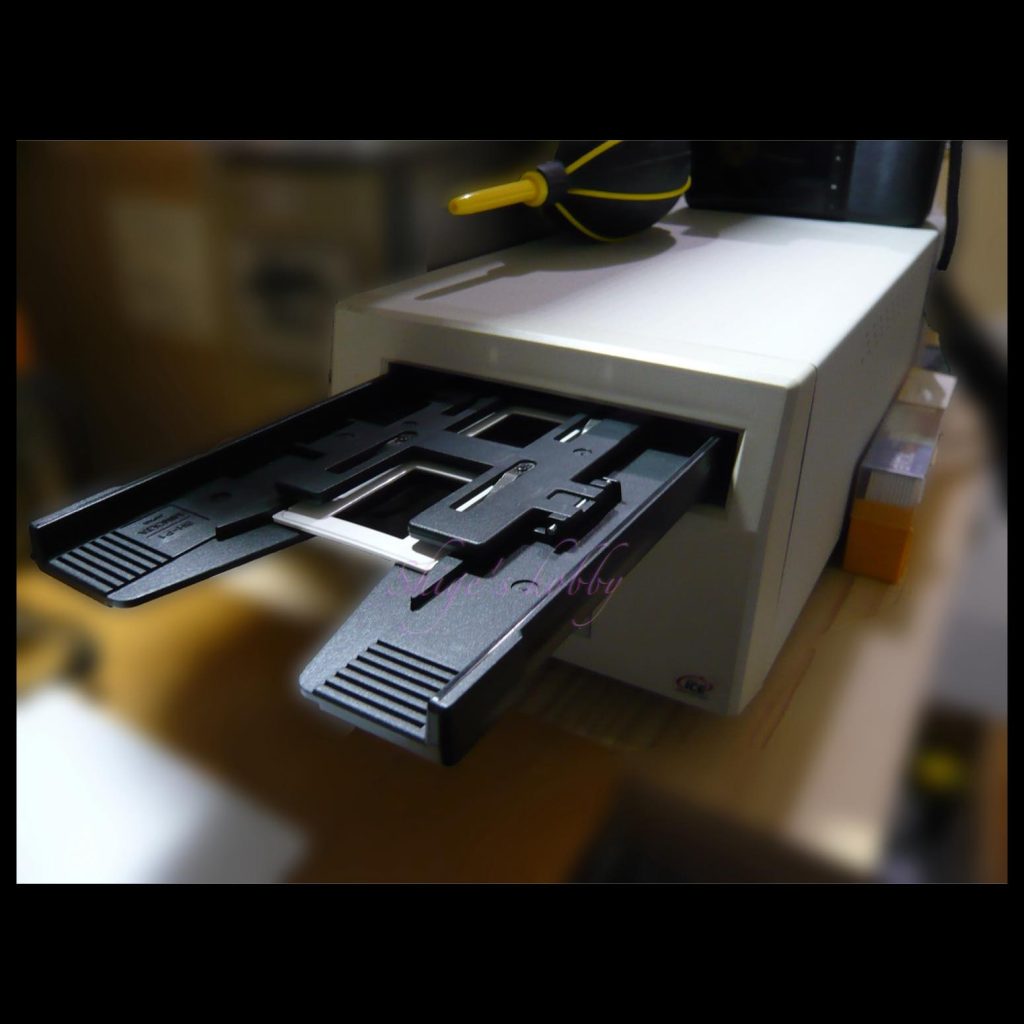
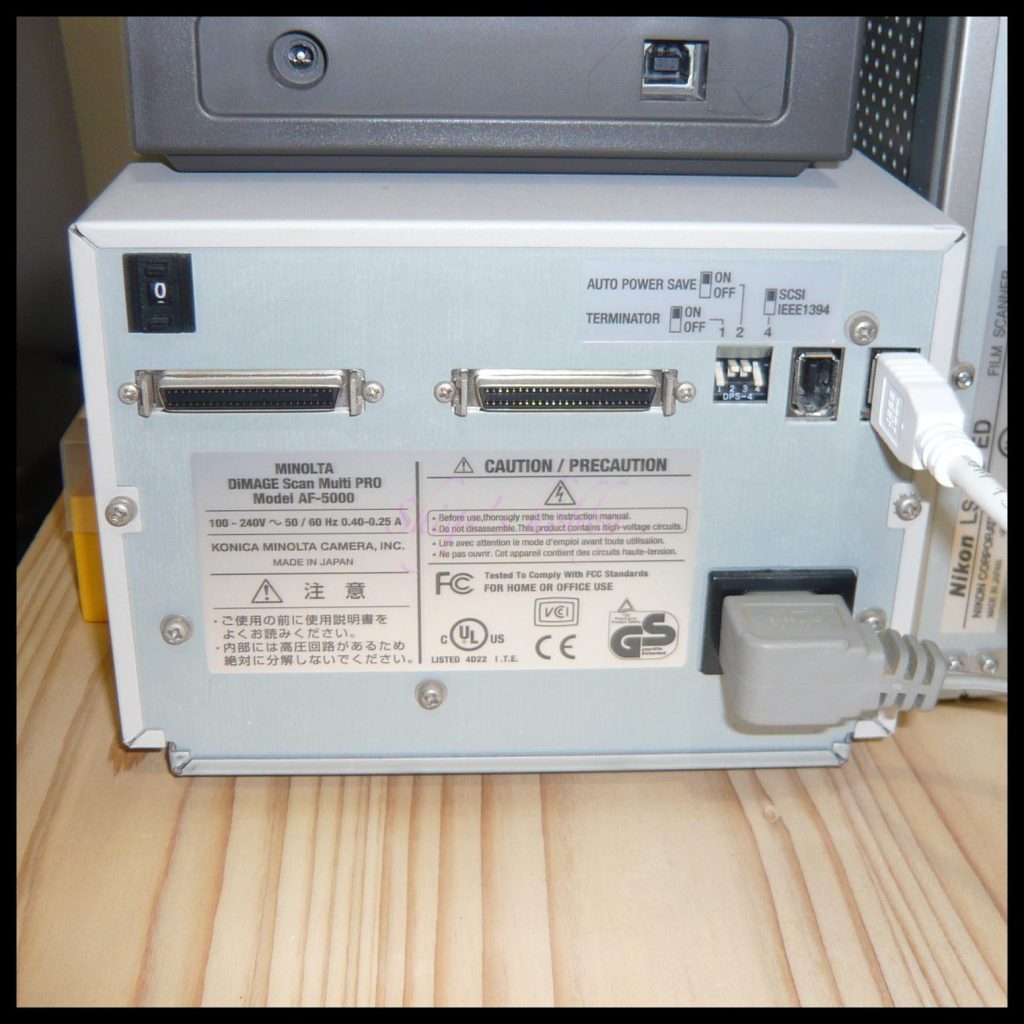
As for software, I purchased VueScan and use it on my Macintosh. That software also has a Windows/Linux version, and I used that when my PC was running Linux/Windows. The interface is the same and there is no difference in usability between the two. The serial number is also the same.
VueScan is a long-established scanning software that supports various scanners and film color simulation.
I paid for this software online a long time ago and have not had to pay for any version upgrades since then.
Specification
The DIMAGE Scan Multi Pro is a 2001 product that supports connections via IEEE1394 (FireWire) and Ultra-SCSI.
Since both interfaces are old as of 2023, an expansion card is required for desktops, and for Macs, when connecting IEEE1394, a Thunderbolt-FireWire adapter (MD464ZMA), retail price about 4000 yen, and a Thunderbolt 3 (USB-) C)-Thunderbolt 2 Adapter (MMEL2AM/A), priced at about 7,000 yen, can be used to connect a Mac and a scanner. I tested it on a Mac with an Intel-CPU, and have not been able to test how it works with M-series Macs such as M1 and M2, but VueScan is natively compatible with M-series, and FirerWire is a protocol established by Apple itself, so even in 2023, it is still supported as a communication standard even though its terminal shape has changed. FirerWire is still supported as a communication standard, although the form of the terminal has changed, so we believe that there is no problem with the M series.
I have seen motherboards with Thunderbolt terminals for Windows as well, but I have not tested whether it is possible to connect with a conversion cable for Mac.
When using it with Ultra-SCSI, it should require a SCSI board and a driver that is compatible with the OS, and if the driver is not provided with the OS being used, it is likely that it will not work. Also, when using a general-purpose SCSI-USB conversion adapter, the conversion adapter should need to operate in SCSI emulated mode (the standard driver provided by the general OS should operate in USB disk mode), and if the SCSI driver for the USB conversion adapter is not provided for the OS you are using If a SCSI driver for a USB conversion adapter is not provided with the OS you are using, it will be difficult to use the scanner.
Most older scanners from CANON, MINOLTA, and NIKON have SCSI connections, but we believe it would be difficult to make them work with newer OSs.
The light source for the older models in the table below is unknown, but presumably models before 2000 use 3-wavelength fluorescent lamps (hot cathode tubes), models after 2000 use 3-wavelength fluorescent lamps (cold cathode tubes), and the Elite 5400 II uses white LEDs. 5400 uses murauchi.com’s The 5400 is described as a 3-wavelength fluorescent lamp (cold cathode tube) on murauchi.com, but information on the 5400 (AF-5400) is extremely scarce, so we cannot confirm the exact information.
| Series name | DiMAGE Scan Dual | DiMAGE Scan Elite | DiMAGE Scan Multi |
| Model name | Dual Dual II(AF-2820U) Dual III(AF-2840) Dual IV(AF-3200) | Elite Elite II(AF-2920) Elite 5400(AF-5400) Elite 5400II(AF-5400-2) | Multi(F-3000) Multi II(F-3100) Multi PRO(AF-5000) |
| Resolution (dpi) | 2820(Dual,Dual II,Dual III) 3200(Dual IV) | 2820(Elite,Elite II) 5400(Elite 5400,Elite 5400II) | 2820(Multi,Multi II) 4800(Multi PRO) |
| Image Sensor | RGB 3line CCD | ← | ← |
| light source | Unknown(Dual) Three-wavelength fluorescent lamp (cold cathode) (Dual II, III, IV) | Unknown(Elite) Three-wavelength fluorescent lamp (cold cathode) (Elite II,5400) White LED(5400II) | Three-wavelength fluorescent lamp (hot cathode) (Multi / Multi II) Three-wavelength fluorescent lamp (cold cathode) (Multi PRO) |
| Scanning method | Manuscript Fixation Optics moving flatbed scanning 1-pass scanning | ← | ← |
| A/D converter | 12bit(Dual I,II) 16bit(Dual III.IV) | 12bit(Elite) 16bit(Elite II) 16bit(Elite 5400) 16bit(Elite 5400 II) | Unknown(Multi II) 12bit(Multi II) 16bit(Multi PRO) |
| Output | 16bit | ← | ← |
| Digital ICE | None | Unknown(Elite) ICE 3(Elite II) ICE 4(Elite 5400) ICE 4(Elite 5400 II) | Unknown(Multi) ROC(Multi II) ICE 3(Multi PRO) |
| Connect interface | SCSI(Dual I,II) USB 2(Dual III,IV) | Unknown(Elite) USB 1/IEEE1394(II) USB 2/IEEE1394(5400,5400 II) | Unknown(Multi) SCSI(Multi II) SCSI/IEEE1394(Multi PRO) |
| Auto feeder | 6 | ← | ← |
| Slide scan | Exist | ← | ← |
| Large format | None | ← | あり |
| Power supply | AC adapter | ← | Build in |
| Weight(kg) | 1.5(for All products) | Unknown(Elite) 1.5(Elite II) 2.5(Elite 5400) 1.5(Elite 5400 II) | Unknown(Multi) Unknown(Multi II) 4(Multi PRO) |
| Options | 35mm film FH-U1 Slide SH-U1 | Elite /II 35mm film FH-U1 Slide SH-U1 Elite 5400/5400II 35mm film FH-M20 Slide SH-M20 | 35mm film SH-M2 Slide FH-M1 Broni MH-M1 |
| Price(Yen/No-tax) | Unknown(Dual) 6.48万円(Dual II) 4.48万円(Dual III) 3.5万円(Dual IV) | Unknown(Elite) 9.8万円(Elite II) 10.5万円(Elite 5400) 7万円(Elite 5400 II) | 29.8万円(Multi) 31.8万円(Multi II) 35.8万円(Multi PRO) |
| Release date | 1997(Dual) 2000(Dual II) 2002(Dual III) 2004(Dual IV) | 1999(Elite) 2001(Elite II) 2003(Elite 5400) 2005(Elite 5400 II) | 1998(Multi) 2000(Multi II) 2001(Multi PRO) |
Digital ICE4 ™ and Digital ICE ™ are trademarks and technologies of EASTMAN KODAK COMPANY, USA.
Reference links
- Dimage Scan Dual II ASCII article (Japanese)
- Dimage Scan Dual III ASCII article (Japanese)
- Dimage Scan Dual III Itmedia article (Japanese)
- Dimage Scan Dual IV Konica Minolta Press Release PDF
- Dimage Scan Elite II ASCII article (Japanese)
- Dimage Scan Elete5400 murauchi.com article (Japanese)
- Dimage Scan Elite 5400 II Konica Minolta Press Release
- Dimage Scan Multi AstroArts article (Japanese)
- Dimage Scan Multi II AstroArts article (Japanese)
- Dimage Scan Multi PRO PC-Watch article (Japanese)
- Dimage Scan Multi PRO Itmedia article (Japanese)
